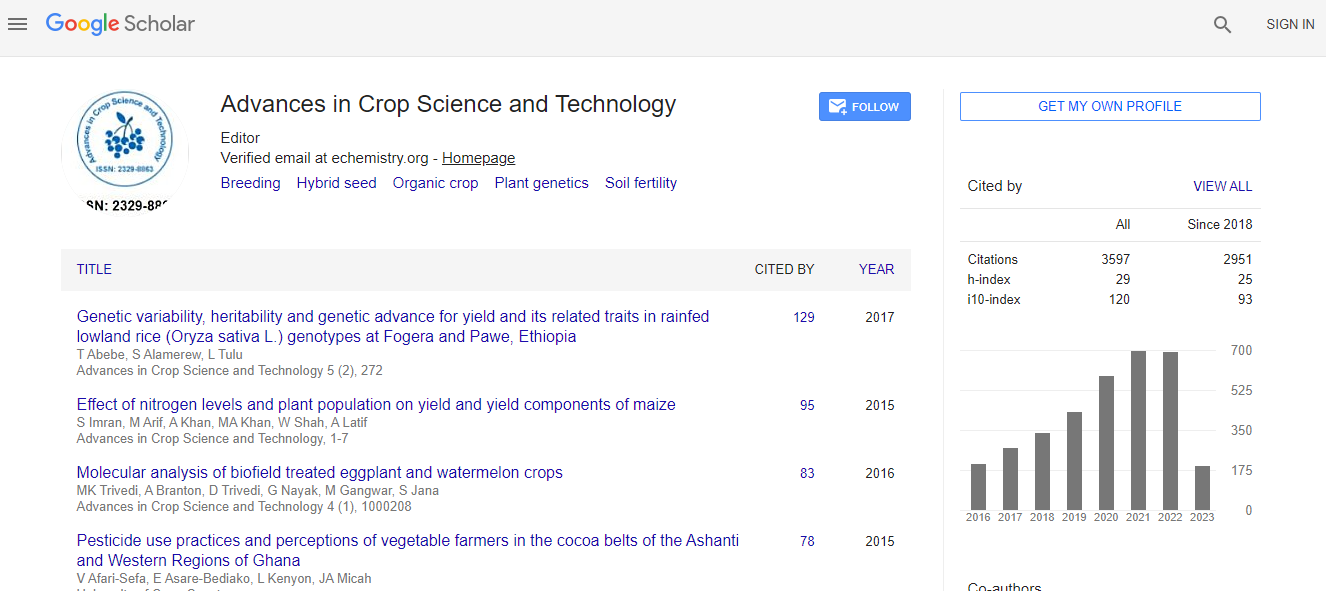Synergies in Agroforestry and Intercropping: Enhancing Biodiversity and Crop Productivity in Sustainable Farming Systems
*Corresponding Author: G. Krishna Mukund, World Agroforestry (CIFOR-ICRAF), India, Email: Krishnamukund143@gmail.comReceived Date: Nov 04, 2024 / Published Date: Nov 29, 2024
Citation: Krishna G (2024) Synergies in Agroforestry and Intercropping: Enhancing Biodiversity and Crop Productivity in Sustainable Farming Systems. Adv Crop Sci Tech 12: 760.
Copyright: © 2024 Krishna G. This is an open-access article distributed under the terms of the Creative Commons Attribution License, which permits unrestricted use, distribution, and reproduction in any medium, provided the original author and source are credited.
Abstract
Agroforestry and intercropping are sustainable farming practices that combine tree cultivation with crops or livestock to promote biodiversity, improve soil health, and increase overall productivity. This review explores the synergies between agroforestry and intercropping systems, highlighting their complementary roles in enhancing biodiversity, improving crop yields, and mitigating environmental challenges such as soil erosion, pest management, and climate change. The integration of trees in agricultural landscapes creates habitats for wildlife, supports nutrient cycling, and improves water retention, while intercropping increases resource use efficiency and reduces the risk of crop failure. Evidence from various studies suggests that these practices, when properly designed, can significantly improve both ecological and economic outcomes in farming systems. This paper underscores the importance of adopting agroforestry and intercropping as part of a broader strategy for sustainable agriculture, food security, and climate resilience.

 Spanish
Spanish  Chinese
Chinese  Russian
Russian  German
German  French
French  Japanese
Japanese  Portuguese
Portuguese  Hindi
Hindi 
